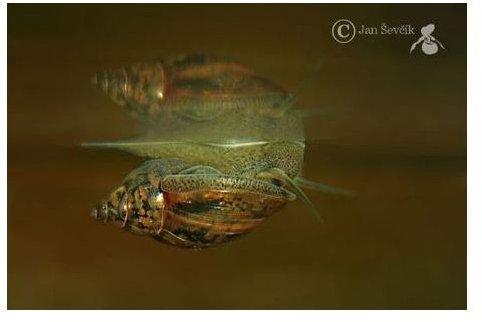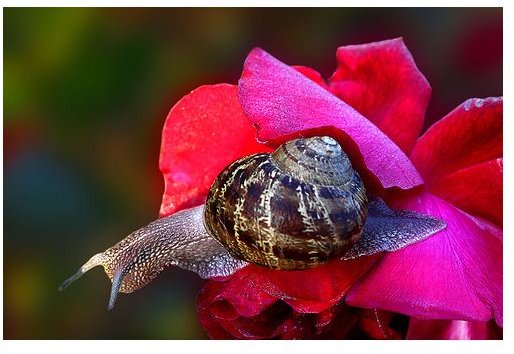An Overview of the Life Cycle of a Gastropod
Gastropods make up the family of animals that include snails, slugs, limpets and sea hares. These animals can be found in fresh or salt water as well as on land. They are the largest group of mollusks and have existed since the early Cambrian period. A single shell and an asymmetrical body characterize these animals.
There are three main subclasses of gastropods; the Prosobranchia (ocean snails), Opisthobranchia (sea slugs, sea butterflies and sea hares), and Pulmonata (land and freshwater snails and slugs). Each of the subclasses has developed in its own way and members differ in their reproduction and life cycles within the subclasses. The gastropod family is so large it is impossible to describe the life cycle of each individual species, but some general rules do apply. The more evolved the species, the more complex their reproductive cycle and their biology. Here we will look at the life cycle of a gastropod through various examples and how they differ depending on the type.
Land Gastropods
Most gastropods found on land have both the male and female reproductive organs in the same animal. A closer look at the brown garden snail will illustrate the life cycle of this type of gastropod. The brown garden snail is actually considered a delicacy and its popularity has spread beyond its native Italy to be grown for food. This snail’s reproduction and development depends on local weather conditions. Hot, humid weather will produce more active reproduction while these snails may actually go dormant during dry, cold weather.
The brown garden snail is nocturnal, as are most land snails. The adult snails will meet and exchange sperm over the course of four to 12 hours. The fertilized eggs are deposited in a nest that is built by the snail out of dirt. The number of eggs laid varies from 30 to 120 and these eggs are covered with dirt and mucus to conceal them from predators. The eggs will hatch in about two weeks and the baby snails are born with translucent shells.
These babies will grow to maturity over the course of 10 months to two years, depending on the local weather and available food supply. In an area where the weather is warm and humid for most of the year, they will mature faster and be able to reproduce a new generation each year. Where warm weather doesn’t last as long, the snail may take several years to grow to maturity.
Land gastropods such as the brown garden snail do not have a larvae state as their marine cousins do. They are born as fully formed adults that grow to maturity, mate, lay eggs and die.
Marine Gastropods
These types of snails and other gastropods produce eggs that hatch into larvae that can swim freely. Many marine gastropods have both the male and female reproductive organs, but will mate with other gastropods to produce offspring. Some of these gastropods are able to fertilize their own eggs if no other adults are available. The eggs hatch into larvae. These larvae are called veliger larvae.
A closer look at the conch snail will help illustrate the life cycle of marine gastropods. These magnificent sea snails are highly prized and widely fished. They mate in the summer months and exchange sperm to fertilize the eggs. The egg cases may contain up to 4,000 embryos that will hatch four to six days after the egg case is in shallow water near the shore. These larvae will settle to the ocean floor, twisting as they land to form an asymmetrical body shape. They then burrow under the sand to hide from predators.

Once the larvae reach the floor, they begin to grow and reach sexual maturity at around three to five years of age. A young conch snail has a very spiky shell, perhaps to help protect from predators. As the animal ages these sharp edges are smoothed. This type of snail may live to be as old as 40 years. Not all marine gastropods live this long, but all produce larvae that grow into adults over a period of time.
Freshwater Gastropods

Most freshwater gastropods lay eggs that hatch into fully-formed miniature adults. These gastropods can be easily transported from one body of fresh water to another and thus become invasive when introduced to a habitat in which they are not naturally occurring and have no predators. These types of snails have a short life span, usually around one year. The males mate with the females. The babies are hatched about one week after the eggs are laid, as fully formed miniature adults. They mature in four to seven weeks and usually live no more than one year.
Gastropods are a fascinating animal for study. They are important commercially as food and for sale to tourists. Some are used as pets, while others are considered pests. Gastropods are also the most successful of the mollusks as they are found in almost every environment on land from mountain elevations to sea level. They also live in both fresh and saltwater environments. These creatures continue to evolve, and our knowledge about gastropod life cycles continues to grow as biologists and oceanographers around the world study them.
References
https://www.esg.montana.edu/aim/mollusca/gastropd.html
https://autocww.colorado.edu/~toldy3/E64ContentFiles/Animals-Invertebrates/gastropod.htm
https://www.ucmp.berkeley.edu/taxa/inverts/mollusca/gastropoda.php
https://entnemdept.ufl.edu/creatures/misc/gastro/brown_garden_snail.htm
https://ed101.bu.edu/StudentDoc/current/ED101fa10/kzantay/Freshwater%20Snails.html
Photo Credits
https://www.flickr.com/photos/46042146@N00/510412583/ - brown garden snail by Randy son of Robert
https://www.flickr.com/photos/15775662@N00/3616092324 - queen conch by divemasterking2000
https://www.eol.org/pages/2406 - freshwater snail by biopix
